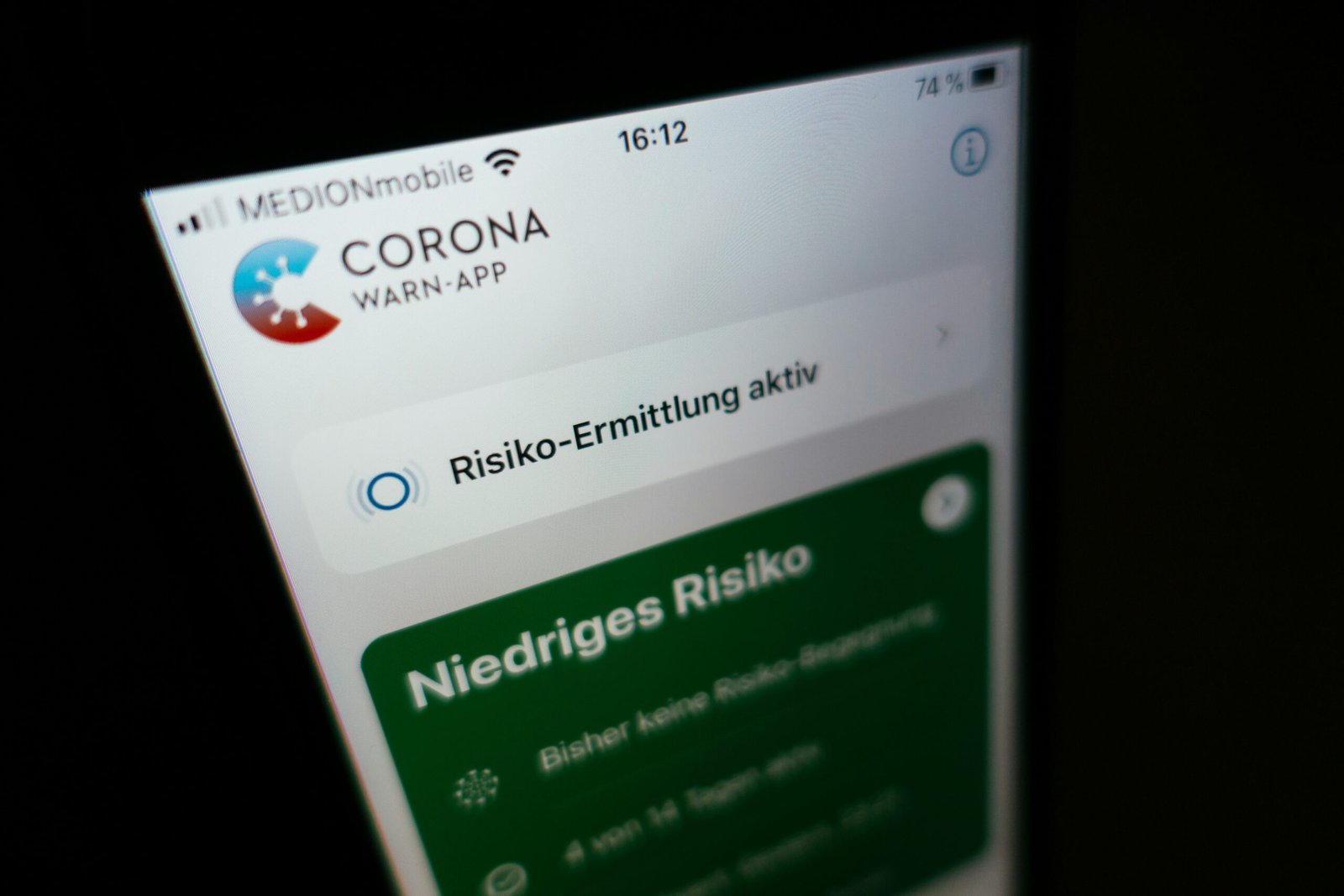5G Security Concerns: What You Need to Know to Protect Your Data
 Photo by Kai Pilger on Unsplash
Photo by Kai Pilger on Unsplash Introduction to 5G Technology
5G technology represents the fifth generation of mobile networks, promising unprecedented advancements in communication, data transfer, and connectivity. It builds upon the progress made by its predecessor, 4G LTE, and aims to deliver faster speeds, reduced latency, and significant improvements in overall network performance. The leap from 4G to 5G involves not only enhancements in speed and capacity but also the ability to support a much larger number of connected devices simultaneously.
One of the key features of 5G technology is its potential to revolutionize various industries by enabling innovations such as autonomous vehicles, smart cities, and advanced healthcare solutions. With speeds that can reach up to 10 gigabits per second, 5G can facilitate real-time data transfer and seamless communication, opening up new possibilities for businesses and consumers alike. The reduced latency, which can be as low as 1 millisecond, ensures that devices respond almost instantaneously, a critical factor for applications that require immediate feedback and control.
The transition to 5G also promises significant benefits for consumers. Enhanced mobile broadband will allow users to download movies, stream high-definition content, and play online games without experiencing buffering or lag. Additionally, 5G’s increased network capacity will support the growing number of Internet of Things (IoT) devices, making it possible for households to connect multiple smart devices without compromising performance.
Moreover, 5G is designed to be more efficient than previous standards, offering better energy management and improved network reliability. This is particularly important as the demand for wireless communication continues to rise, and networks must be robust enough to handle the increasing load. In essence, 5G technology is not just an upgrade but a fundamental shift that has the potential to transform the way we live, work, and interact with the world around us.
Key 5G Security Threats
The advent of 5G technology heralds numerous advancements, but it also introduces a set of significant security threats. One of the primary concerns lies in the potential for increased cyber attacks. As 5G networks expand and connect more devices than ever before, the attack surface for malicious actors grows exponentially. This heightened connectivity elevates the risk of cyber attacks, targeting everything from personal devices to critical infrastructure systems.
Data breaches also pose a formidable threat in the 5G landscape. With enhanced data throughput and greater speeds, more data is transmitted and stored than in previous network generations. This amplification makes data breaches both more likely and more potentially devastating. Cyber criminals may exploit vulnerabilities in the network’s architecture to intercept sensitive information, compromising personal privacy and corporate security alike.
Moreover, the complexity of securing vast, interconnected networks cannot be understated. The 5G ecosystem is characterized by its heterogeneous nature, incorporating everything from IoT devices to autonomous vehicles. This diversity, coupled with the volume of devices, makes it challenging to implement and maintain robust security measures consistently. Each component within the network could present unique vulnerabilities, necessitating a comprehensive and adaptable security strategy.
Documented examples provide a testament to these risks. For instance, in early 2020, a security lapse in a 5G network led to unauthorized access to user location data, highlighting the potential for personal information to be compromised. Similarly, a proof-of-concept attack demonstrated how a malicious actor could exploit 5G protocols to disrupt network services, posing severe implications for businesses and consumers relying on uninterrupted connectivity.
In addressing 5G security threats, it is imperative to develop proactive defense mechanisms and foster collaboration among stakeholders, including telecommunications companies, cybersecurity firms, and regulatory bodies. Only through comprehensive and continuous efforts can the integrity and safety of 5G networks be assured.
Impact on Personal Data Security
With the advent of 5G technology, personal data security faces significant new challenges. The enhanced speed and connectivity afforded by 5G networks not only improve user experience but also amplify opportunities for malicious actors to compromise personal data. Increased bandwidth allows for more extensive data transfer, subsequently broadening the attack surface for cybercriminals. This poses substantial risks to individual users, as the probability of identity theft, unauthorized spying, and data breaches rises.
Identity theft is a primary concern. Faster data transmission rates mean that personal information, such as social security numbers, credit card details, and login credentials, can be intercepted and misused more swiftly than before. Hackers employing advanced techniques can exploit vulnerabilities in the network to access and steal critical personal data. Instances of identity theft have been on the rise, driven by the rapid proliferation of 5G-capable devices and the increased interconnectivity that accompanies them.
Furthermore, the deployment of the Internet of Things (IoT) devices in a 5G ecosystem exacerbates the issue of unauthorized spying. These devices, often with minimal security measures, serve as potential entry points for cyber intruders. Unauthorized access to IoT devices can grant malicious actors the ability to monitor and collect sensitive information from an individual’s private environment. For example, compromised smart home devices can facilitate illicit surveillance, undermining a user’s sense of security and privacy.
Unauthorized data collection is another pressing concern in the 5G age. Service providers and third-party applications are increasingly able to gather extensive datasets about individual users. This raises issues regarding consent and the ethical use of personal data. Without stringent data protection regulations and transparency mechanisms, users are vulnerable to having their information harvested, shared, and used without their explicit approval, potentially leading to exploitation and privacy violations.
In conclusion, while 5G technology brings numerous benefits, it also necessitates a heightened awareness of personal data security risks. Individuals must remain vigilant and utilize robust security practices to safeguard their information in this rapidly evolving digital landscape.
Challenges in Developing Secure 5G Networks
Developing secure 5G networks presents a myriad of technical and logistical challenges, driven primarily by the increasing complexity of network infrastructure. One of the foremost issues lies in the integration of legacy systems with the advanced architecture of 5G. Many existing infrastructures are not inherently compatible with 5G technology, necessitating significant adaptation. This process involves not only updating hardware but also implementing new software solutions, which opens multiple points of vulnerability if not executed with precision.
The heterogeneity of services and devices in a 5G ecosystem further complicates security efforts. Unlike its predecessors, 5G supports a broader range of applications, from Internet of Things (IoT) devices to high-bandwidth mobile communications. Each of these requires tailored security measures, and ensuring end-to-end encryption across such a diverse set of services is a formidable task. The encryption protocols must be robust enough to withstand potential cyber threats while being versatile enough to adapt to varied use cases.
Moreover, the inherently decentralized nature of 5G networks introduces additional security challenges. Traditional networks operate within clear boundaries, but 5G’s distributed architecture disperses data across multiple nodes. This decentralization requires stringent secure communication protocols to ensure the integrity and confidentiality of data in transit. Implementing such protocols is further complicated by the need to maintain high-speed data transfer and low latency, which are critical features of 5G technology.
The rapid pace of 5G deployment also pressures developers to continually update and patch systems, balancing speed with security. As new vulnerabilities and threats emerge, adaptive security measures must be promptly implemented to mitigate risks. The dynamic environment of 5G calls for a proactive approach to security, requiring continuous monitoring, advanced threat detection capabilities, and prompt response mechanisms to safeguard the infrastructure effectively.
Addressing these challenges necessitates a comprehensive, multi-layered security strategy that combines technological innovation with rigorous protocol adherence and ongoing infrastructure upgrades. Only through such an integrated approach can developers hope to build and sustain secure 5G networks capable of protecting user data in an increasingly interconnected world.
Regulatory and Policy Considerations
As the rollout of 5G networks accelerates, regulatory and policy considerations become increasingly critical to ensuring robust security measures. Governmental bodies and international organizations play a pivotal role in framing the regulations that will govern 5G security. These entities need to address the unique vulnerabilities and potential threats associated with this technology, encompassing aspects such as data privacy, network resilience, and the integrity of communications.
Existing regulations focus on ensuring that telecommunications companies adhere to stringent security protocols. Countries around the world are enacting policies aimed at safeguarding national security while promoting technological innovation. For instance, the European Union’s “Cybersecurity Act” mandates a framework for risks posed by 5G, encouraging comprehensive risk assessments and robust certification schemes. Similarly, many countries have established guidelines that specify security requirements for service providers to mitigate cybersecurity risks.
Policy responses to emerging 5G security threats need to be both reactive and proactive. Governments are now more inclined to place restrictions on high-risk vendors and are demanding greater transparency from telecommunication providers regarding their security practices. New policies also necessitate regular audits and assessments to ensure continuous compliance with evolving safety standards. Additionally, legislative bodies are increasingly aware of the potential for cyber-attacks to cripple essential services, emphasizing the need for resilience and quick response mechanisms.
Global cooperation is paramount to effectively standardize and enforce 5G security measures. Harmonized international standards are essential to address the multi-faceted nature of 5G security threats, which often span across borders. Entities like the International Telecommunication Union (ITU) and collaborative forums such as the Global Forum on Cyber Expertise are key players in fostering a unified approach. By sharing intelligence and best practices, these organizations aim to build a more secure and resilient global 5G landscape.
In essence, the effective regulation and policy formulation for 5G security requires concerted efforts from national governments and international bodies alike. Through collaboration and stringent enforcement, it is possible to mitigate risks and safeguard the data and communications critical to modern society.
Best Practices for Businesses Implementing 5G
As businesses transition to 5G technology, it is imperative to adopt robust security measures to safeguard data and ensure seamless operations. One of the primary steps is securing networks through the deployment of advanced security infrastructures. Implementing multi-layered security protocols, such as firewalls and intrusion prevention systems, can significantly enhance the defense against potential threats.
Conducting regular security audits is another essential practice. These audits help identify vulnerabilities, assess the effectiveness of existing security measures, and ensure compliance with industry standards. Regular audits not only help in detecting anomalies early but also in keeping the security strategies up-to-date with the latest threats and advancements in technology.
Encryption plays a pivotal role in protecting sensitive information. Businesses should adopt robust encryption methods for data at rest and in transit to ensure unauthorized parties cannot access or tamper with the data. Implementing end-to-end encryption for communications can further bolster security, making it difficult for attackers to exploit any intercepted data.
Employee training on security protocols is also crucial. Educating employees about the significance of security measures, recognizing phishing attempts, and following best practices can substantially reduce the risk of human errors leading to security breaches. Regular training sessions and updates on the latest security threats and countermeasures can empower employees to act as the first line of defense against cyberattacks.
Case studies of successful 5G implementation highlight the benefits of comprehensive security strategies. For instance, a leading manufacturing company that adopted 5G technology managed to secure its network by integrating advanced encryption and conducting continuous security audits. Similarly, a financial institution effectively minimized risks by regularly training its staff on the latest security protocols and maintaining stringent network security measures.
In conclusion, businesses embracing 5G technology must prioritize securing their networks, conducting regular audits, implementing robust encryption, and ensuring employee awareness of security protocols. These practices collectively contribute to creating a secure 5G environment, safeguarding sensitive data and maintaining operational integrity.
Consumer Tips for Protecting Personal Data on 5G Networks
As 5G technology becomes more integrated into our daily lives, it is crucial for consumers to prioritize personal data protection. With faster speeds and lower latency comes increased risk. Here are some practical tips to help you safeguard your personal information while using 5G-enabled devices and services.
1. Use Strong, Unique Passwords: One of the easiest yet most effective ways to protect your data is by using strong and unique passwords for each of your online accounts. A combination of uppercase letters, lowercase letters, numbers, and special characters can vastly improve password strength. Consider using a reputable password manager to keep track of your passwords securely.
2. Utilize VPNs (Virtual Private Networks): Using a VPN can add a robust layer of security to your internet connection by encrypting your online activity. This is especially important when accessing public Wi-Fi networks, which are more vulnerable to data breaches. A reliable VPN can prevent unauthorized access to your personal information.
3. Regular Software Updates: Keeping your software up to date is critical in mitigating security vulnerabilities. Software updates often include patches for known security issues. Enable automatic updates on your devices to ensure you are always running the latest, most secure versions.
4. Be Cautious Online: Exercise caution with what you share online and be wary of suspicious links, emails, and messages. Phishing attacks are common and can compromise your personal data. Always verify the authenticity of communications before providing any information.
5. Understand App Permissions: Before downloading and using any app, review the permissions it requests. Be cautious of apps that require access to unnecessary data or features. Limit permissions to only what is essential for the app’s functionality. Regularly review and adjust permissions in your device settings.
By implementing these straightforward strategies, you can enhance your personal data security while leveraging the powerful capabilities of 5G networks. Staying vigilant and informed is key to navigating the digital landscape safely.
“`html
Future Trends in 5G Security
The future landscape of 5G security is poised for significant advancements as the technology matures and proliferates. As the deployment of 5G networks expands globally, the focus is shifting towards developing more sophisticated security measures to counteract emerging threats. One primary area of attention is the evolution of network slicing security. Network slicing, which allows multiple virtual networks to be created on a single physical infrastructure, will necessitate robust isolation mechanisms to prevent cross-slice attacks and ensure data integrity.
Another promising trend is the integration of artificial intelligence (AI) and machine learning (ML) in 5G security protocols. AI and ML algorithms can detect unusual patterns, predict potential threats, and respond to security breaches in real-time. This proactive approach could significantly enhance the ability to mitigate risks before they can cause substantial harm. Additionally, blockchain technology is being explored as a means to secure communication channels within 5G networks, providing immutable and transparent records of transactions that can thwart unauthorized access.
A key emerging threat in the 5G realm is the potential exploitation of IoT devices. With the massive interconnectivity facilitated by 5G, endpoints become attractive targets for cybercriminals. To combat this, manufacturers are expected to implement more stringent security measures at the device level, including hardware-based security modules and secure boot processes. Standards organizations and regulatory bodies are also working on setting up comprehensive guidelines to ensure all devices connected to 5G networks adhere to strict security protocols.
Ongoing research and development efforts in 5G security are essential to stay ahead of these ever-evolving threats. Collaboration between governments, academic institutions, and industry leaders will be critical in developing a resilient 5G security framework. Moving forward, the emphasis will undoubtedly be on creating adaptive, intelligent, and automated security systems that can quickly respond to new vulnerabilities, ensuring that the benefits of 5G technology can be fully realized without compromising data integrity and privacy.
“`



No Comments